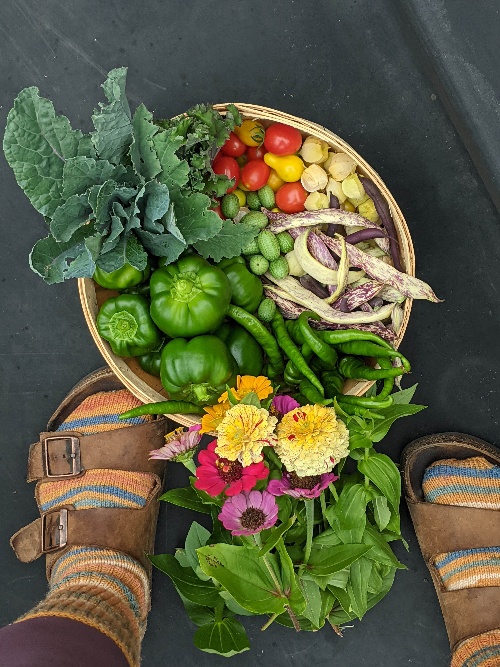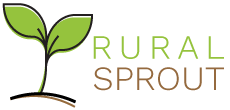
Adding seaweed to your garden isn’t anything new. The practice of using seaweed in the garden has been around for centuries. Use what you’ve got, right?
Naturally, humans living near coastlines who also farmed didn’t need long to figure out that all that stuff washing up on the beach makes for great compost, mulch, etc.

But what about all those bottles of seaweed, kelp and phytoplankton showing up on Amazon and beyond?
Do they make the cut?
Before we dig into whether or not this stuff works and what, exactly, you’re supposed to do with it anyway, I want to make sure we’re on the same page. I’m going to be talking about seaweed/kelp products marketed for use in your garden and houseplants. These are different from fish fertilizer. Which, it just so happens, I have a firm opinion on.
Fish Emulsion Fertilizer
No. Just no. Even if this stuff ensured I would have bushels of tomatoes and African violets that never stopped blooming, I still wouldn’t use it because I did use it for a solid year. And you know what?
It stinks. A lot.
(It is also a pretty good fertilizer, and I had good tomato yields and beautiful African violets.)
It’s a concentrated slurry made of fish parts. Yeah, it’s about as appetizing as it sounds. Trust me on this one; you don’t want to make the mistake of accidentally mixing it with warm water instead of cold. I made that mistake once and only once.
When I used it on my houseplants, my whole house reeked to the point where I would open the windows in January to help alleviate the smell. And any time my neighbor would visit with her dog, it was all we could do between the two of us to keep the pup out of my plants. I can’t even imagine what it would be like now that I have two cats.
As for using it outdoors? Well, the smell dissipates much quicker, but not before attracting every wild animal within a fifty-mile radius. You might as well stand in your yard with a bullhorn and yell, “I’ve got dead animals sprayed all over my plants! Come dig up my entire garden!”
And the flies. So many flies.
Nope. So much nope. Moving on to seaweed…
What Is Seaweed Fertilizer, Really?

Let’s get one thing straight right off the bat. Everyone calls it seaweed fertilizer, but rarely does it have much nutrient value. Dig around for an NPK on the packaging or the online description, and nine times out of ten, you’ll find 0-0-0.5 or 1-0.5-2.
If you’re hoping to replace every bag and bottle of fertilizer in your garden shed, this won’t be your silver bullet.
So, what is it then? And why is it suddenly everywhere?

Seaweed/Kelp extract or meal is considered a “biostimulant.” This is a fancy word for natural compounds or organisms that support plant growth in one way or another, usually through increased nutrient uptake or efficiency or through stress tolerance.
But there are so many of these on the market claiming to do so many different things that it can be difficult to cut through the noise.

Fun fact: biostimulant is not even a real word.
It’s not in the dictionary yet because there is no consensus on what a biostimulant is or does.
But just because these plant enhancers haven’t been accurately described yet doesn’t mean there isn’t something to them. While they may not provide the big three – nitrogen, phosphorus and potassium – to your plants, they can help with other things.
One benefit is nutrient uptake. Many seaweed extracts contain live microorganisms that can make nutrients already in the soil more readily available for your plants. Sound familiar? That’s because mycorrhizae does the same thing. (And we love our mycorrhiza around here.)
These seaweed extracts are also supposed to help with seed germination, improving germination times.
Seaweed is packed with plant hormones:
- Auxins = root development, cell elongation
- Cytokinins = shoot growth, cell division, delay aging
- Gibberellins = seed germination, flowering, stem elongation
These are hormones that play an important role in plant growth and production. There have been several scientific studies that seem to correlate using seaweed to increase growth and production, such as this one done with tomatoes at NC State University.

It’s even suggested that these elixirs from the sea can help make your garden more resistant to disease, pests and drought.
But before you run out and buy one, there are a couple of things to keep in mind.
The science is all over the place – there are just as many studies showing seaweed products help as there are showing they don’t make any difference at all. (Seriously, I have a headache after sifting through all the studies I dug up.) Thankfully, seaweed and kelp products don’t seem to harm plants, so even if they end up doing nothing, nothing is better than something bad.
It’s an unregulated industry – I’m not saying that it needs to be; it’s just that because it’s unregulated, you don’t necessarily know what you’re going to get. Most of the studies I read concerning using seaweed all used different varieties, which doesn’t answer the question – does all seaweed work? Is it just the varieties studied? How do I know what types of seaweed are in the product I’m using?
Is It Even Worth Using Seaweed Extract?
Much like when LED grow lights started becoming popular, I’m going to end this article with an unsatisfactory conclusion. Is the hype around seaweed and kelp mixtures for the garden just that – hype? Or does it offer a measurable benefit to plants?
Yes. It does seem that the studies show it works better in the home garden than with commercially produced crops. In fact, Mickey, our hydrangea queen, swears by it for her beautiful hydrangea blooms each year.
Just keep in mind that a lot of the purported effectiveness of these products depends on numerous other factors. It seems we need more studies to really figure out what’s going on here. It’s meant to be a soil and plant supplement. Just like you wouldn’t start taking vitamins and stop eating, the same goes for seaweed enhancers and fertilizing.
The Good News
All of these products are pretty cheap. That means you can be your own scientist and give them a try in your garden. You may find that they’re exactly what you were looking for to give your garden that extra boost. Here are a few things to keep in mind when using seaweed or kelp in your garden:
Don’t Forget to Fertilize
Remember, seaweed and kelp contain very small amounts of NPK, so if you’re growing hungry feeders, like tomatoes, you’ll need to use a balanced fertilizer like this one.
Temper Your Expectations
If you’re going to use any kind of seaweed extract, it’s important to remember what they’re supposed to be used for (see above). Ignore what the marketing says, even if the bottle says it will triple your yields, give you fruit that’s 10x sweeter and make your cabbage heads bulletproof.

These are meant to enhance what’s already going on below the soil, not replace it.
Stick With What You Know
Because these are unregulated products, it makes it hard to recommend something. You just don’t know what you’re going to get. If you decide to give one a try, I highly recommend you choose one from a reputable brand you already know and trust.
For instance, I’m a huge fan of the brand – Down to Earth All Natural Fertilizers. So, if I were going to give seaweed another try, I would opt for their Kelp Meal over another brand I’ve never heard of. And yes, I did say “another try.”
If you’d rather opt for a liquid seaweed fertilizer, then this Bloom City Liquid Seaweed Extract is the best reviewed.
My Own Terribly Unscientific Little Experiment

I decided to try adding seaweed extract to my houseplants. I chose this brand and decided to wait until I had used the full bottle before making any judgment calls. You’ll notice that the actual bottle says it’s a ‘Soil Enhancer,’ not fertilizer.
My houseplants are pretty healthy to begin with, and I take good care of them.
I watered them on their normal schedule, and I added the recommended dose of ‘soil enhancer’ to the water each time.
In the end, I didn’t really notice a difference. I wasn’t blown away by stunning blooms or huge growth spurts. Again, though, this is hardly empirical data here. However, I did pick up a box of the kelp meal from Down to Earth, and I plan on using it in my garden this year, specifically my tomatoes.
In the end, if you’re curious, pick up a bottle or a box and give it a try. You can decide for yourself if kelp is crap or the next best thing since mycorrhizae.

Get the famous Rural Sprout newsletter delivered to your inbox.
Join the 50,000+ gardeners who get timely gardening tutorials, tips and tasks delivered direct to their inbox.


